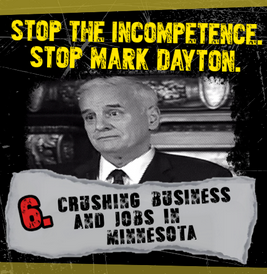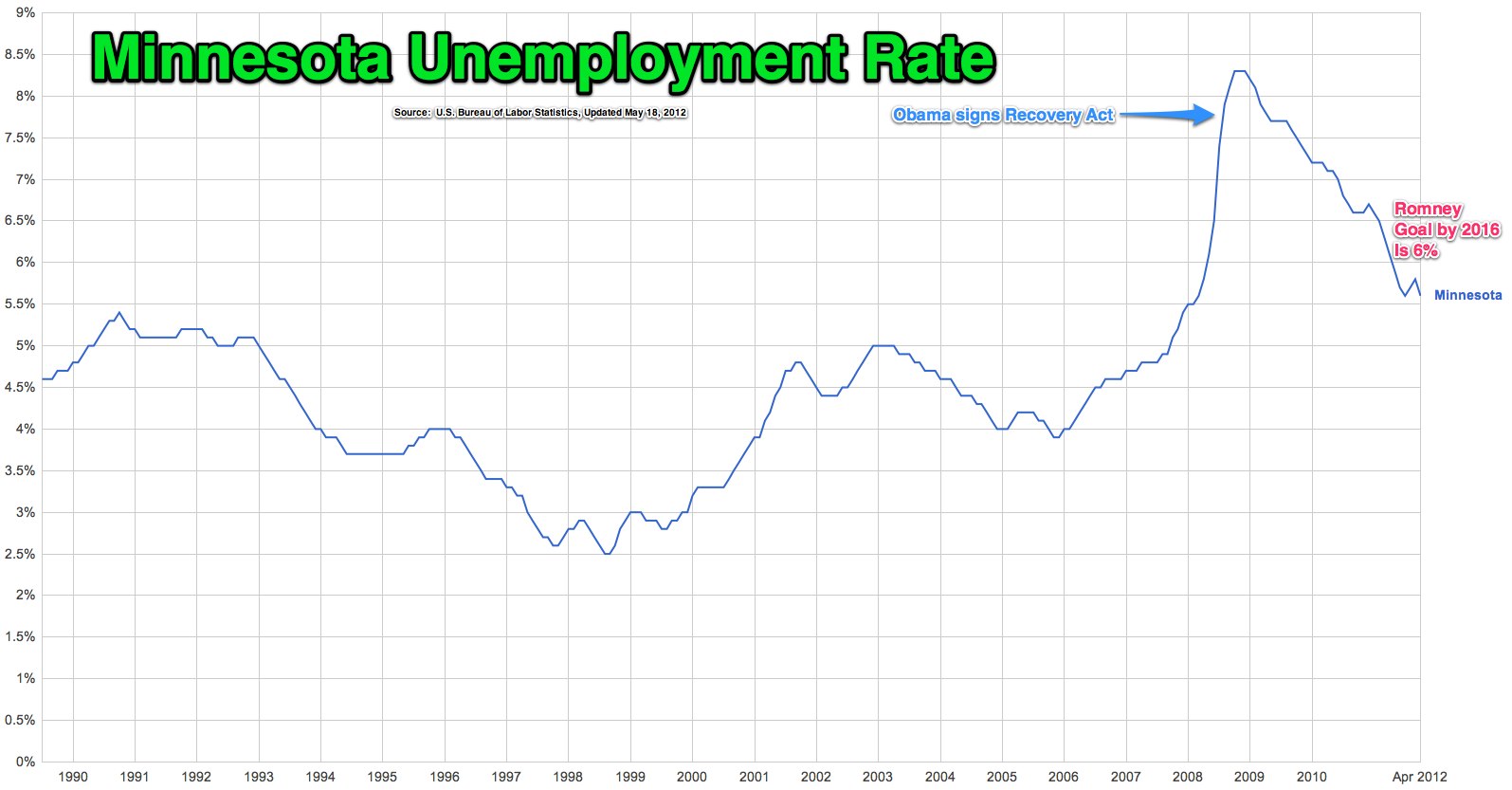 Over the last several years, Minnesota business leaders and conservatives like Tom Emmer and Jeff Johnson have predicted that Governor Dayton’s combination of 1) asking the wealthiest citizens to pay their fair share of taxes, 2) increasing the minimum wage and 3) refusing to enact Pawlenty-style government spending cuts would lead to disaster for the state’s economy. This has been their war cry for years.
Over the last several years, Minnesota business leaders and conservatives like Tom Emmer and Jeff Johnson have predicted that Governor Dayton’s combination of 1) asking the wealthiest citizens to pay their fair share of taxes, 2) increasing the minimum wage and 3) refusing to enact Pawlenty-style government spending cuts would lead to disaster for the state’s economy. This has been their war cry for years.
Minnesota business leaders are now here to tell us that their prediction has proven correct.
Following Dayton’s implementation of those three pillars of Datyonomics, Minnesota currently has a 3.7 percent unemployment rate. Meanwhile, the Twin Cities metropolitan area has a 3.2 percent unemployment rate.
Minnesota’s 3.7 percent unemployment rate compares very favorably to the nation’s 5.8 percent rate. It also looks strong next to the 6.0 percent unemployment rate corporate darling Mitt Romney boasted he could achieve by the end of 2016 if Romnomics polcies were enacted. Conservative Romnomics –tax cuts for the wealthy, no mininum wage increase and massive government spending cuts — essentially would have been the polar opposite of Daytonomics.
While a 3.7 percent unemployment rate in the wake off Daytonomics may look like proof that conservatives and business leaders were incorrect about the destructive impacts of progressive policies, Twin Cities Business reports that Minnesota business leaders disagree. While they acknowledge that high unemployment under Daytonomics would have been bad news for the economy, they now stress that low unemployment under Daytonomics is also bad news for the economy.
“…some business leaders around the state had previously expressed worries about a cooling economy this winter, citing a potential labor shortage as the unemployment rate drops.”
To summarize, if the unemployement rate under the DFL Governor’s progressive policies would have remained at Pawlenty-era peaks (8.3 percent), that would have been proof that Daytonomics was hurting the state economy. But now that unemployment under Dayton policies is low (3.7 percent), that is also evidence that Daytonomics is hurting the economy.
In other words, progressive Daytonomics simply cannot be considered a success. Just ask Minnesota business leaders and conservatives.
– Loveland

